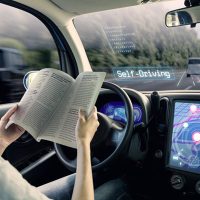Tesla Vehicles Endanger Everyone On The Road

Zipping through stop signs without so much as a pause, one Tesla driver –Geoffrey Fowler–is finding out that, even after employing the software updates sent to users’ phones, the vehicles are anything but safe. And because the technology allowing drivers to leave the driving to the vehicle is in cars on roadways across the country, we should all be concerned.
The Safety Guardrails Don’t Work
A recent recall was designed to check that the driver’s eyes were on the road and their hands were on the steering wheel, although the vehicle was taking care of the driving all by itself. Fowler tested the update by driving his Tesla with hands near—but not on—the steering wheel while having a sticker blocking the interior camera in the car and found he could get away with hands-free driving for over a minute. Apparently, even though an investigation by government watchdogs led to the recall, the update itself was controlled by Tesla, who seems unwilling to disaffect customers who want literal hands-free driving.
NHTSA Investigation
It seems that some drivers are determined to use the Tesla Autopilot feature even on roadways that the software does not effectively manage, like roads that have cross traffic. The resulting accidents have been devastating, with serious and fatal collisions harming Tesla drivers, innocent motorists who happen to be around a Tesla, and other bystanders. It’s a situation where misuse of the technology is harmful to not just the individual who owns the Tesla, but to everyone else, as well.
Customers Easily Misuse Autosteer
Tesla Autosteer is only supposed to be used on highways with no cross traffic, center dividers, and obvious lane markings, and drivers are advised in the manual to only use it when paying attention and keeping hands on the steering wheel. Its limited abilities are surpassed by the abilities of the Full Self-Driving capability, which is an expensive ($200 monthly) subscription service. While it is aimed at city street driving, Autosteer, the more common feature, is not. Regrettably, people can use Autosteer pretty much as they choose, whether or not it is safe. In some instances, drivers may not even realize the limits of the technology, since warnings are in small print in the owner’s manual, which likely go unread in many instances. And recalls or updates are sometimes difficult to get if a user’s Wi-Fi isn’t strong.
Why Doesn’t the Software Limit Access in Situations When it’s not Effective?
The thing is, Tesla uses great mapping software and has surround-view cameras, so why doesn’t the Autopilot link into those features and limit the use of Autosteer when the vehicle is on streets it’s not designed to accommodate effectively? Seriously, does it make sense to have the technology at your fingertips and not employ it? Why not have stopping at red lights and stop signs a part of the basic Autosteer package, especially since the company doesn’t shut down use of the technology on city streets? Those involved in accidents are surely curious—especially because anyone who drove a Tesla last year had a greater chance of being in an accident than people in any other vehicle. That’s saying something.
Have You Been Injured?
If you or a loved one has been injured or killed in an accident involving a Tesla, you may have grounds for a personal injury civil suit. To discuss the possibilities, contact the experienced Baltimore personal injury attorneys at The Law Office of Hasson D. Barnes.
Source:
washingtonpost.com/technology/2023/12/31/tesla-autopilot-recall-test/

